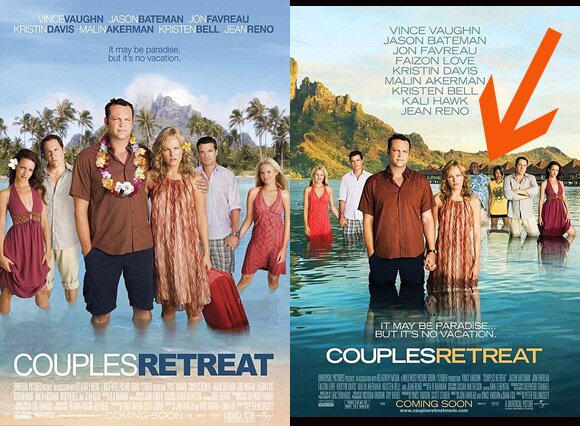Princess, the frog, pitfalls of being too black
Some critics of my radio shows and articles often complain that I make everything into a racial issue. Well, I’m sure they’ll love this one.
A lot of folks are aware by now that the new Disney movie, “The Princess and the Frog”, features Disney’s first Black princess, Tiana, and some have noted Disney’s efforts to be culturally sensitive. But in all the excitement about the princess, nobody really thought to ask, “Wassup with the prince?”
In the spirit of full disclosure, I haven’t seen the movie, but based on a recent article in Newsweek, “Prince Naveen has a tannish complexion, but he clearly isn’t African-American.” The writer goes on to say that this is a good thing, because it sends a positive message about interracial dating and that Black women in particular need to consider such options.
Here’s the deal. I have no problem, in theory, with Disney sending a message about inter-racial relationships, but I must say, I DO question the timing. The Little Mermaid, Beauty and the Beast, and Aladdin all dealt with crossing boundaries of difference, whether beauty or, in the case of Aladdin, even class. But at the end of the day, Disney has always chosen to be ethnically consistent.
I would have loved to see audience reaction to Beauty and the Beast if, after waiting the entire movie for the Beast to be transformed, the Beast turned into an African prince. I imagine some folks in the theater would have wanted the prince to turn back into the Beast. But alas, Disney chose not to go that route.
Coincidentally, Disney’s first Native American heroine, Pocahantas, was also involved in an interracial relationship, but at least then they were able to hide behind the historical basis of the story. And yet now, with a purely fictional Princes Tiana, we see the same pattern.
Let me make it more plain. Why it gotta be the sista princess to become the inter-racial poster child?
On one hand, I could limit this commentary to the specific issue of inter-racial relationships in the movies and television. There are some interesting sub-plots there, particularly as it relates to the trend of Black female/White male vs. Black male/White female. As early as Captain Kirk and Uhura’s kiss, through Whitney and The Bodyguard and as recent as “Something New”, America has always been more comfortable with Black women dating White men. Of course, Guess Who’s Coming to Dinner is a highly notable exception, but you get the picture.
Nevertheless, the issue I’m trying to get at goes beyond the narrow issue of inter-racial dating. The deeper message is that it’s just not okay to be too Black, and that a little bit of White is necessary for legitimacy. Of course, this is not a new critique. For years, it’s been observed that Black actors must have White co-stars in order to be marketable. Even after becoming a star on Saturday Night Live, Eddie Murphy had to go through a series of White co-stars (Nick Nolte, Dan Akroyd, etc.) before becoming viable on his own. And just last year, in an interview with Barbara Walters, Will Smith discussed the same issue.
Just last week we were reminded that even a little bit of Black can be too Black. While marketing the film Couples Retreat in the United Kingdom, the studio removed the two Black co-stars from the film’s poster.
While many people, Black, White and other, will say that I’m just being overly sensitive about some stuff that’s just supposed to be entertainment, the issue really goes beyond just entertainment. It’s intertwined into the structures of American society, a society in which, as Brother Malcolm used to say, too Black often translates into too strong.
We see the reality of “too Black, too strong” every day. We see it in business settings, and even government offices, where having one Black manager is viewed as safe, but having anything more than that is viewed as overkill.
We see it in election campaigns, particularly when Black candidates are running for statewide offices. One Black candidate seeking one such office is sometimes non-threatening enough to minimize race as an issue, but two Black candidates seeking two separate seats can elevate the issue and create a backlash, resulting in not just one loss, but two. It’s an interesting pattern which could be the topic of a whole separate article…
In fact, I think I will write a whole separate article, so you’ll just have to check back here for more info on that some other time.
In any event, more important than the ways “too Black, too strong” is used to limit individual appointments, are the ways it is used to limit efforts to correct racial disparities. Programs that use racial targeting in order to correct the ills of structural racism are not only wildly unpopular politically, but they’re also increasingly more difficult to maintain legally. It’s actually easier for a White plaintiff to win a discrimination case in U.S. courts than it is for a Black victim of discrimination. If you don’t believe me, go find a Black firefighter in New Haven.
With all that said, the power of the “too Black” concept can be defeated, but only if we have the courage to confront it in all its cultural, political and economic manifestations. Those of us who insist on such a structural analysis are often accused of making the problem worse by constantly playing the race card. Like a doctor who must explain a diagnosis of illness, it can be a heavy responsibility, but that is a burden we must accept. At the end of the day, the patient must hear the truth.
And the truth shall make you free.
COMMENTS
Author: Cliff Albright (3 Articles)




Pingback: The Princess and the Frog: The Black Fairy Tale that Apparently Wasn’t Politically Correct Enough « The Siren